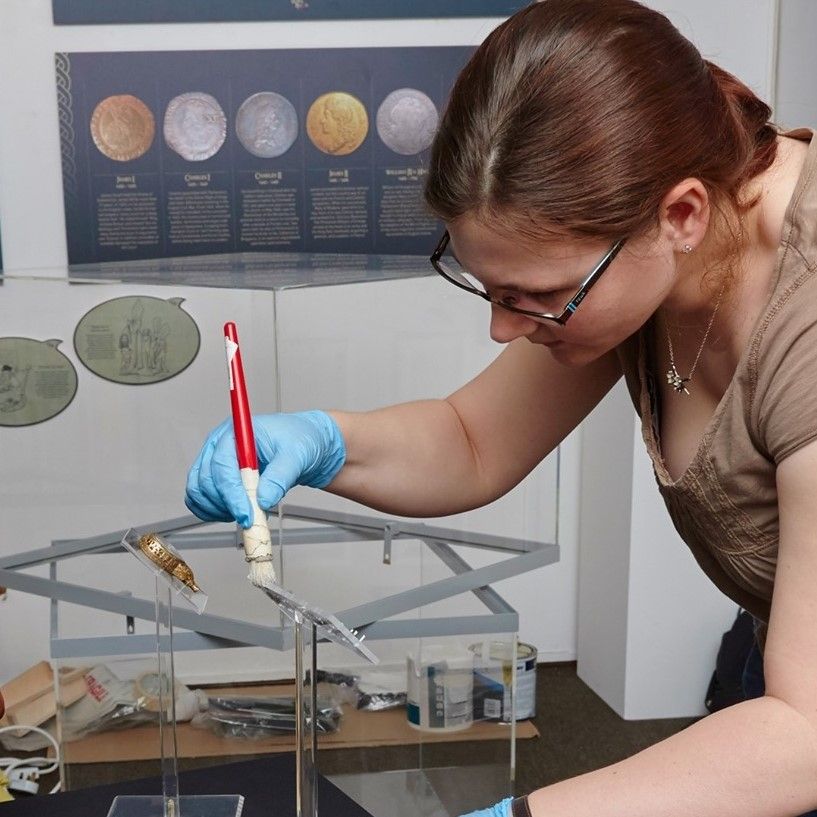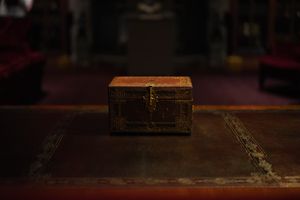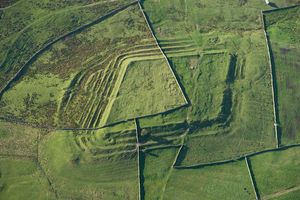With Hampshire Cultural Trust Conservator, Claire Woodhead
In August 2019, HCT was able to acquire the ‘Oakley hoard’, an assemblage consisting of a copper alloy and wood tankard, another copper alloy vessel, some iron implements and a ceramic vessel. The items were discovered in association with a Late Iron Age burial at Oakley, near Basingstoke, in January 2017. Conservation of the Oakley tankard has already been completed (an account of the work can be read in Hampshire Field Club and Archaeological Society Newsletter, No. 73, Spring 2020).
In this third installment of a short series of posts for the Festival of Archaeology, the ceramic vessel begins to undergo reconstruction.
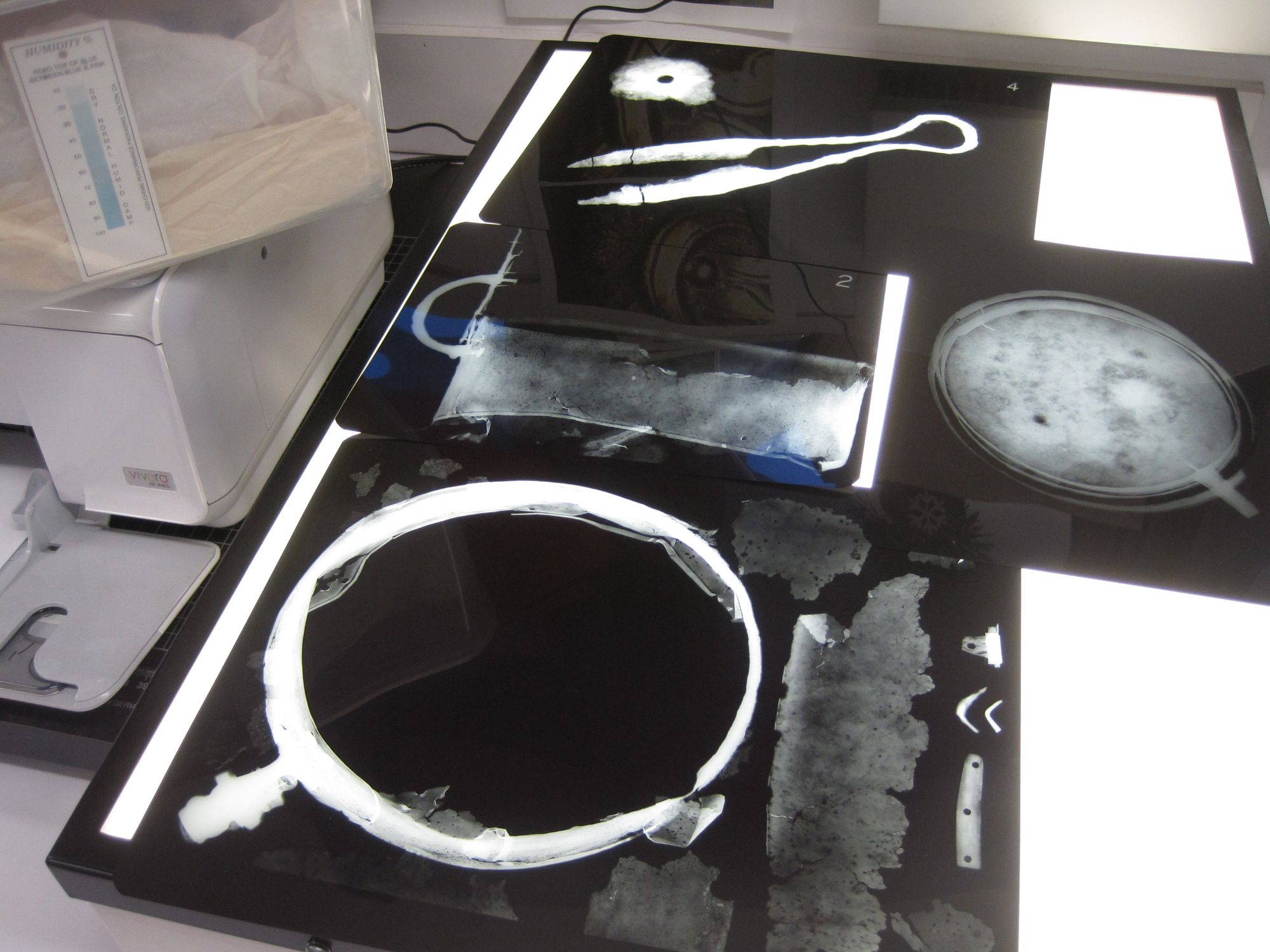
The Oakley vessel – Part 3: Reconstruction
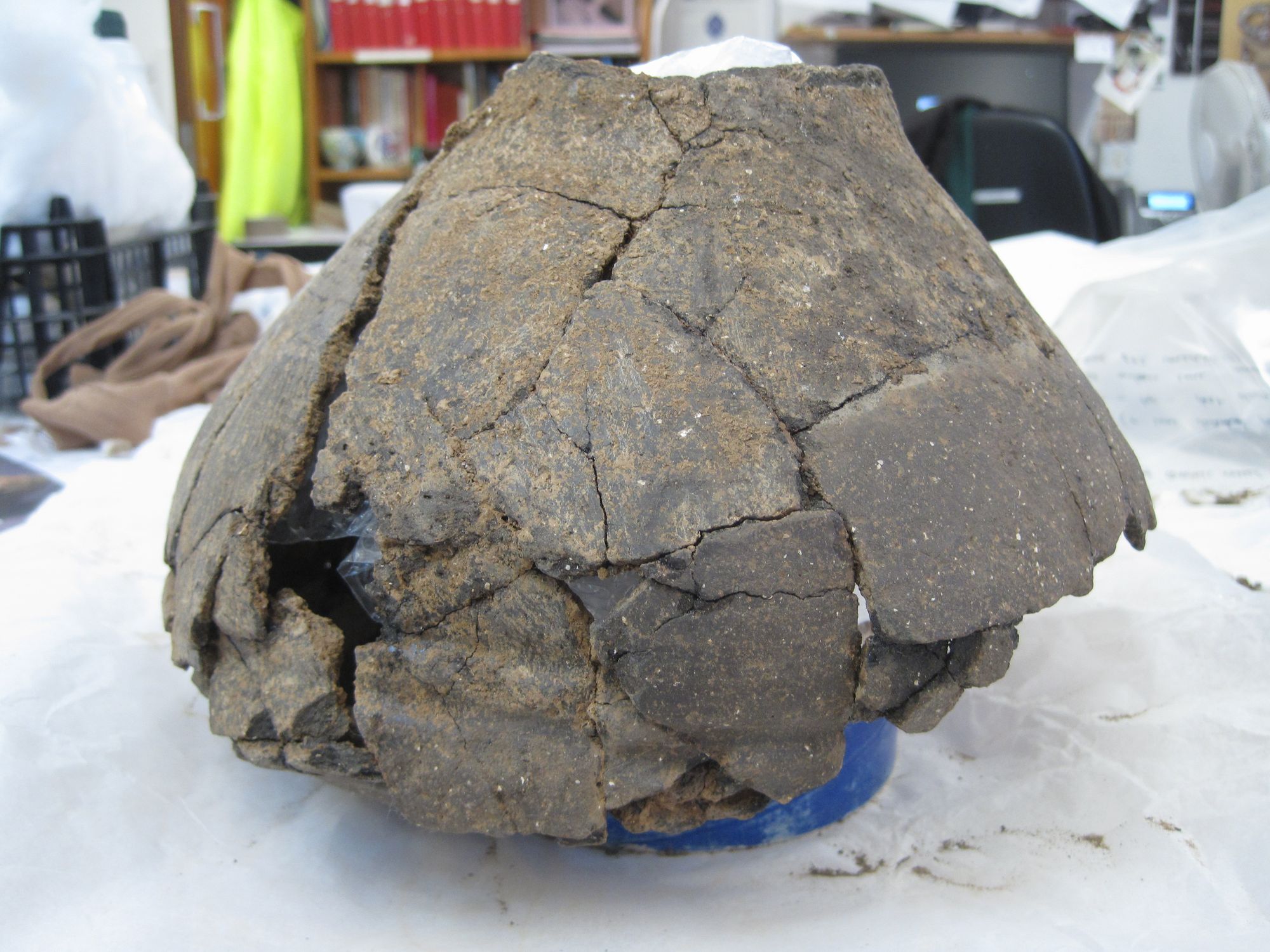
At the end of the previous instalment, the Oakley vessel had been consolidated and micro-excavated, leaving the crushed form of the pot intact. Although the vessel at this point was holding together, it could be seen that it was not going to remain stable long term. Many of the joins now need to be made with adhesive, rather than relying on consolidant alone. In order to allow for this, the pot is carefully dismantled, using a solvent to release certain previously consolidated areas.
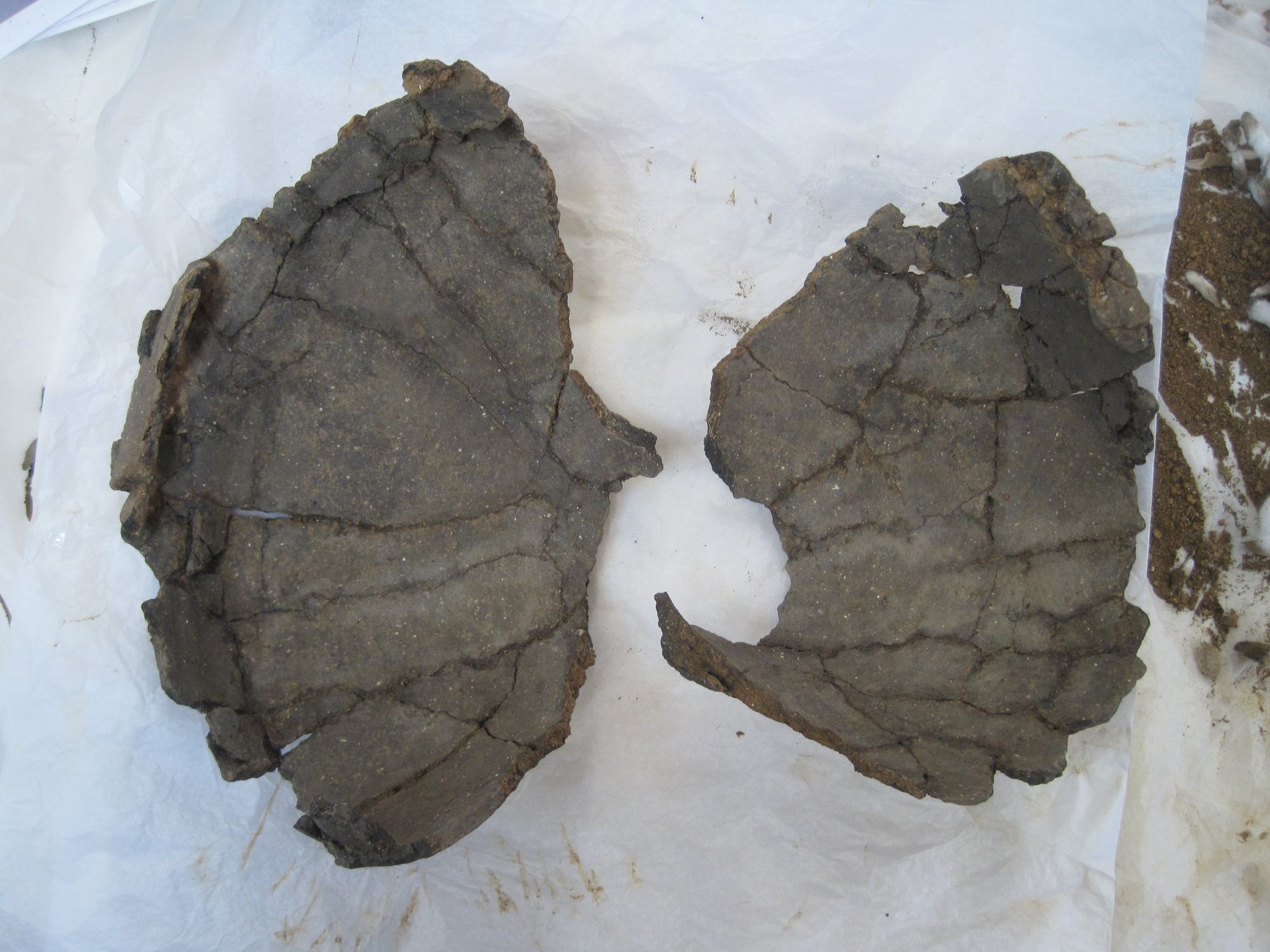
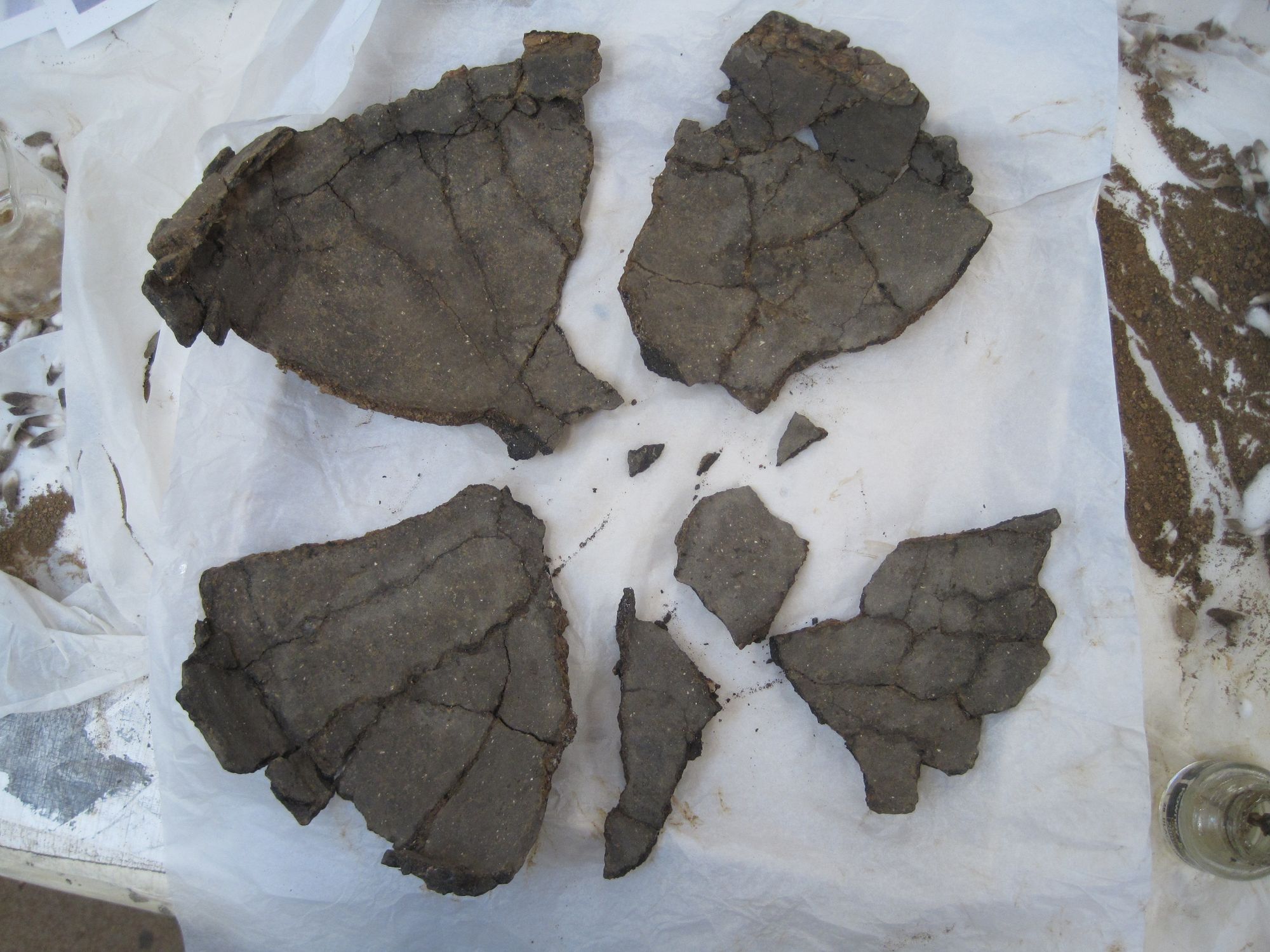
While it is important to increase structural stability, it is still desirable to retain the sense of a crushed pot, and not completely reconstruct it. Complete reconstruction would in any case probably not be an option, as many of the soft, low fired pieces have distorted, and would no longer fit against each other in the same way. Care is therefore taken to improve the bonds where possible but not to reshape too much – retaining the effects of the weight of history!
Strengthening the structure not only enables better long term preservation and potential display, but will mean I can safely clean the lower part of the pot - inaccessible during consolidation due to the external supports. The adhesive chosen is appropriate in terms of reversibility, longevity and strength - it will not be too strong for the fabric, which may cause damage further down the line.
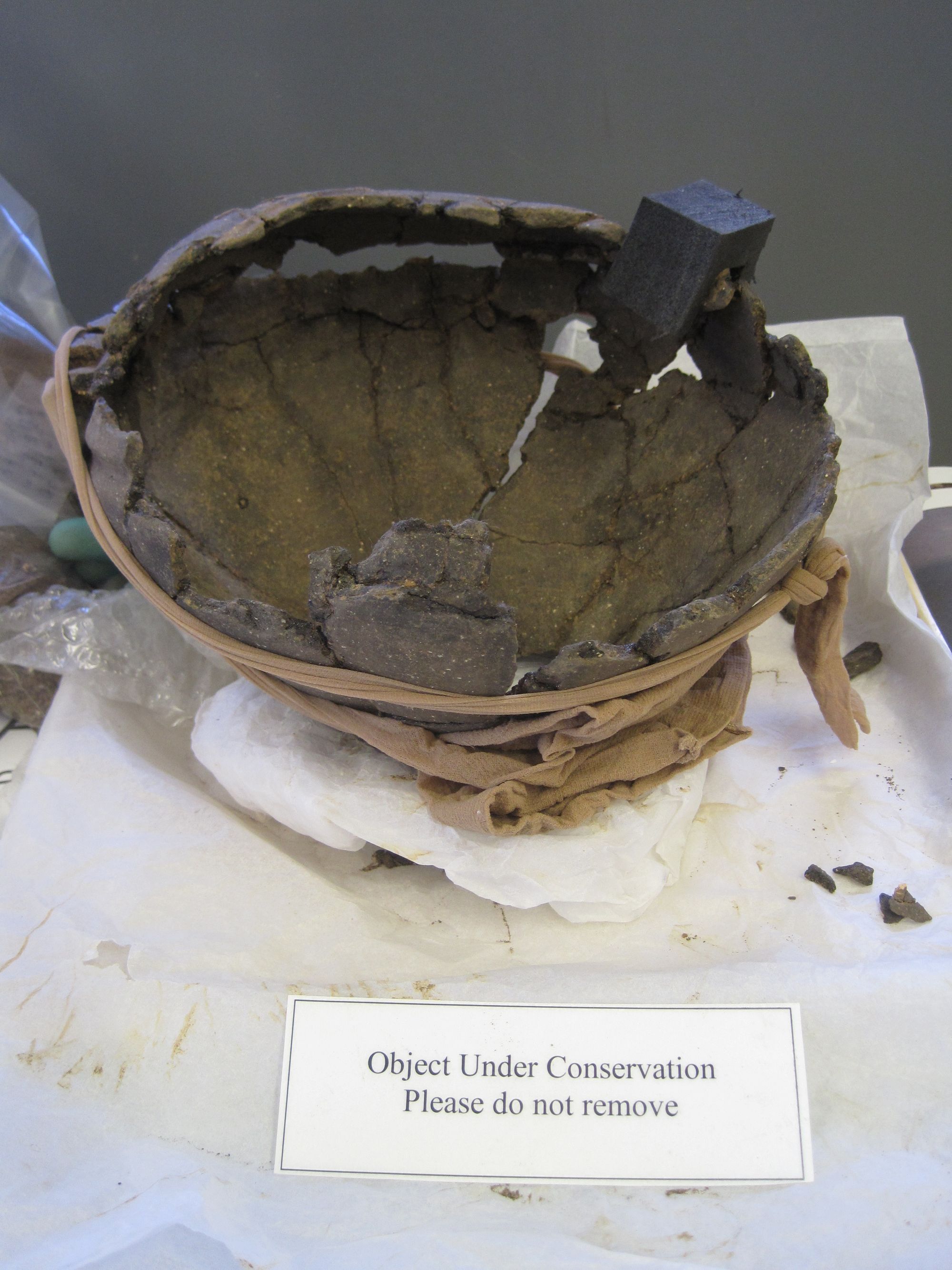
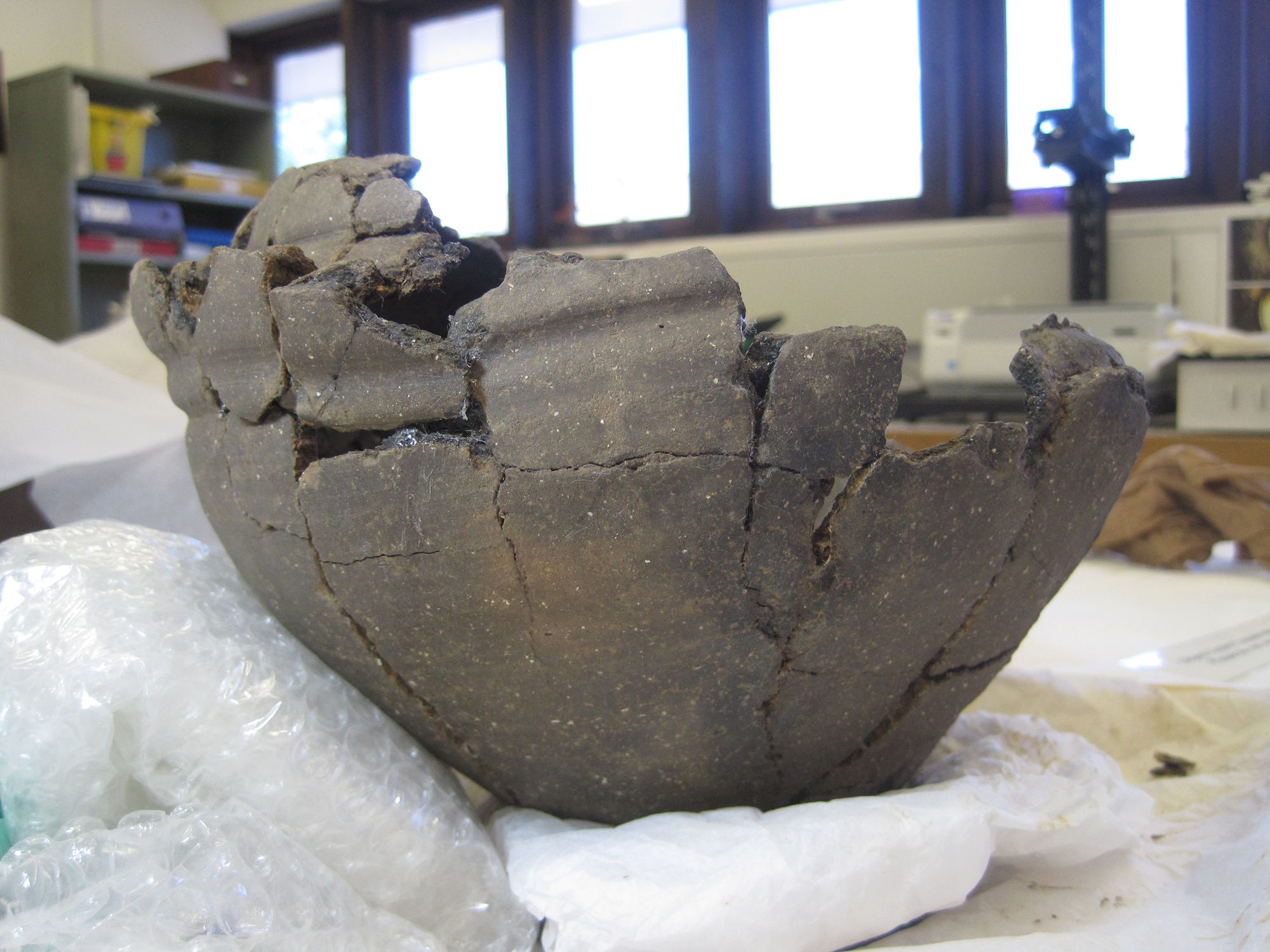
Now begins the task of removing any excess adhesive or consolidant. This should be minimal if applied correctly, but there is always a final tidy-up to be done. Using a scalpel to ping off any solids, and the same organic solvent used earlier on a cotton swab, I will roll back and forth gently over any accidental runs, lifting them off and into the swab, being careful not to over-wet the fabric or cause darkening from diluted adhesive being drawn into the body of the pot. Any stray cotton wool fibres are removed with tweezers – I will be getting up close and personal with this pot until it is finished!

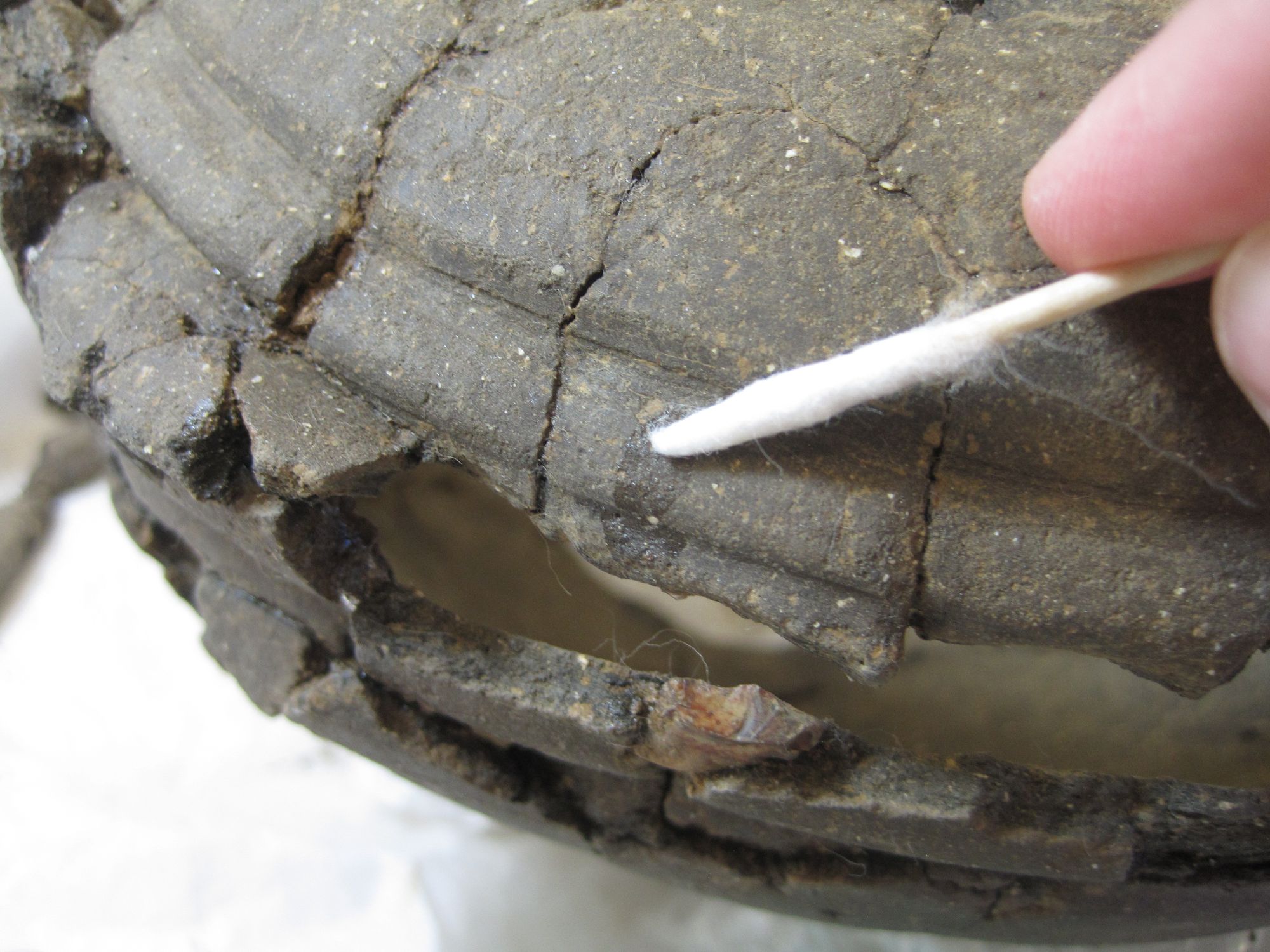
If you have enjoyed Culture on Call and you are able to make a donation, any support you can give will help us keep people connected.

